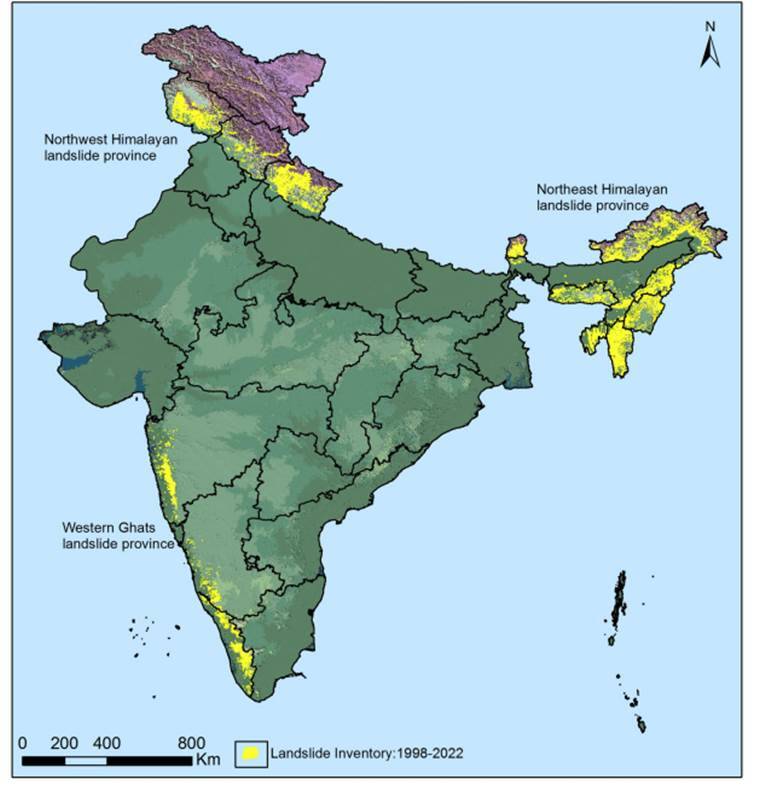Historian Ebba Koch’s book ‘The Planetary King: Humayun Padshah, Inventor and Visionary on the Mughal Throne’ was launched in New Delhi on Humayun’s birth anniversary.
References
Astronomers have spotted a comet which could be an exceptionally bright comet in the night sky in 2024.
References
The Indian Space Research Organisation (ISRO) has released the Landslide Atlas of India, a detailed guide identifying landslide hotspots in the country.

According to the Statement of Climate of India 2022 released by the India Meteorological Department, heavy rain, floods and landslides claimed 835 lives in the country in 2022.
References
Researchers at Winona State University, have created a design for a ‘glowscope’, a device that could democratise access to fluorescence microscopy.
An optical microscope views an object by studying how it absorbs, reflects or scatters visible light.
|
Foldscope - The Foldscope is a handheld microscope made mostly of paper. (costs around Rs 400) It has a magnification of around 140x and can identify objects just 2 micrometres wide. It was created by researchers at Stanford University in 2014. Researchers from the Indian Institute of Science (IISc), Bengaluru, have found that a foldscope that can be easily linked to a smartphone camera |
References
The Reserve Bank of India (RBI) has allowed in-bound travellers into India to use UPI.
UPI for NRIs - UPI for NRIs is tagged to fully KYC compliant NRO/NRE accounts linked to their non-Indian mobile phone number and every time UPI is used, money is directly debited from their bank accounts.
References